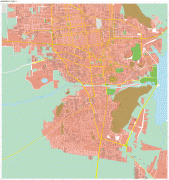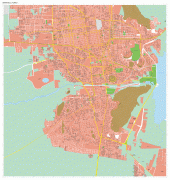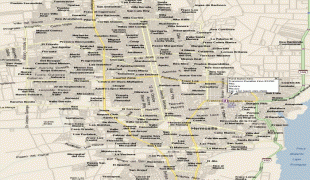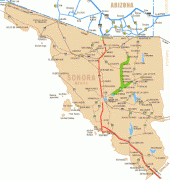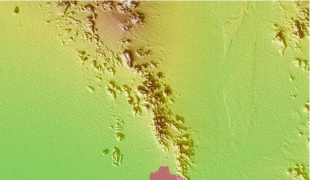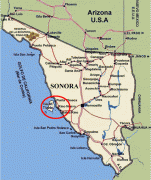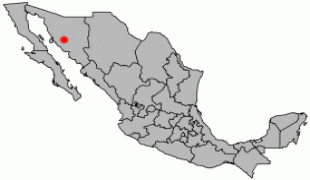Hermosillo
 |
Hermosillo was ranked as one of the five best cities to live in, in Mexico, as published in the study "The Most Livable Cities of Mexico 2013" by the Strategic Communications Cabinet of the Mexican Federal Government. Hermosillo was also ranked in 2016 as the seventh most competitive city in the country according to the Mexican Institute for Competitiveness (IMCO), based on factors such as its economic diversification, geographical location, access to education, government, innovation and international relations. The major manufacturing sector has been the production of automobiles since the 1980s.
Hermosillo has a subtropical hot desert climate (BWh). Temperatures have been as high as 49.5 C in the summer months, making it one of the hottest cities in the country.
Evidence from a site called the San Dieguito Complex, located in the El Pinacate Zone, suggests the area has been inhabited by humans for about 3,000 years. Evidence of agriculture dates back 2,500 years. In the pre-Hispanic era, this area was inhabited by the historic Seri, Tepoca, and Pima peoples.
The first encounter between the Spanish and the indigenous peoples of the area occurred in the middle of the 16th century, when European explorers came in search of gold. The Spanish explorers were followed by their Franciscan missionaries in the state of Sonora around 1614. Eusebio Francisco Kino arrived in 1687, founding a mission in nearby Cucurpe. The present-day states of Sonora and Sinaloa were loosely organized as the provinces of Sonora, Ostimura and Sinaloa.
In 1700, three small Spanish villages were founded in what is now the outskirts of Hermosillo: Nuestra Señora del Pópulo, Nuestra Señora de Los Angeles, and la Santísima Trinidad del Pitic. The native peoples here soon became hostile to the colonists and repeatedly drove them out in the early 18th century. In 1716, the Spanish offered irrigated lands for farmers to the native peoples, who agreed to abide by Spanish law. Around 1726, a fort named the Presidio of Pitic was constructed to stop the domination of this area by the natives, especially the Seri. However, the situation remained contentious. The first church was not built until 1787, and the first formal parish was not established until 1822.
During the Mexican War of Independence, Sonora and the town of Pitic stayed loyal to the Spanish Crown. Local general Alejo García Conde defeated insurgent José María González Hermosillo, who had been sent by Miguel Hidalgo y Costilla. Following independence from Spain, in 1825 the village of Pitic was made the seat of the department of the same name. In 1828, the settlement changed its name to Hermosillo to honor the insurgent leader José María González de Hermosillo.
A battle between imperial and republican forces occurred here in 1866 during the French Intervention in Mexico. In 1879, the capital of the state of Sonora was moved from Arizpe to Hermosillo. In 1881 the railroad linking Hermosillo with Guaymas and Nogales was finished, allowing for economic expansion in the area by bringing in mining equipment and modern agricultural equipment. Since then, the city has been an economic center for northwest Mexico.
During the Mexican Revolution, beginning in 1910, forces loyal to Pancho Villa were expelled from the city by General Manuel M. Diéguez. After the assassination of Francisco I. Madero in 1913, Venustiano Carranza, then governor of Coahuila, sought refuge in Hermosillo. Here, Carranza began the Constitutionalist Movement. As a result, Hermosillo is nicknamed the "revolutionary capital of the country."
From the late 19th century, until around 1920, Chinese immigrants entered the state of Sonora as laborers. A significant number settled in the city of Hermosillo. Some of these immigrants established businesses, especially shoe manufacturing and clothing. Some of the most successful Chinese-owned businesses in Sonora were based in Hermosillo, and sold their merchandise to other parts of the country. But by the 1920s, anti-Chinese sentiment had become strong in Sonora state, and many Chinese left for Mexico City or the United States.
Map - Hermosillo
Map
Country - Mexico
Currency / Language
| ISO | Currency | Symbol | Significant figures |
|---|---|---|---|
| MXV | Mexican Unidad de Inversion | 2 | |
| MXN | Mexican peso | $ | 2 |
| ISO | Language |
|---|---|
| ES | Spanish language |






